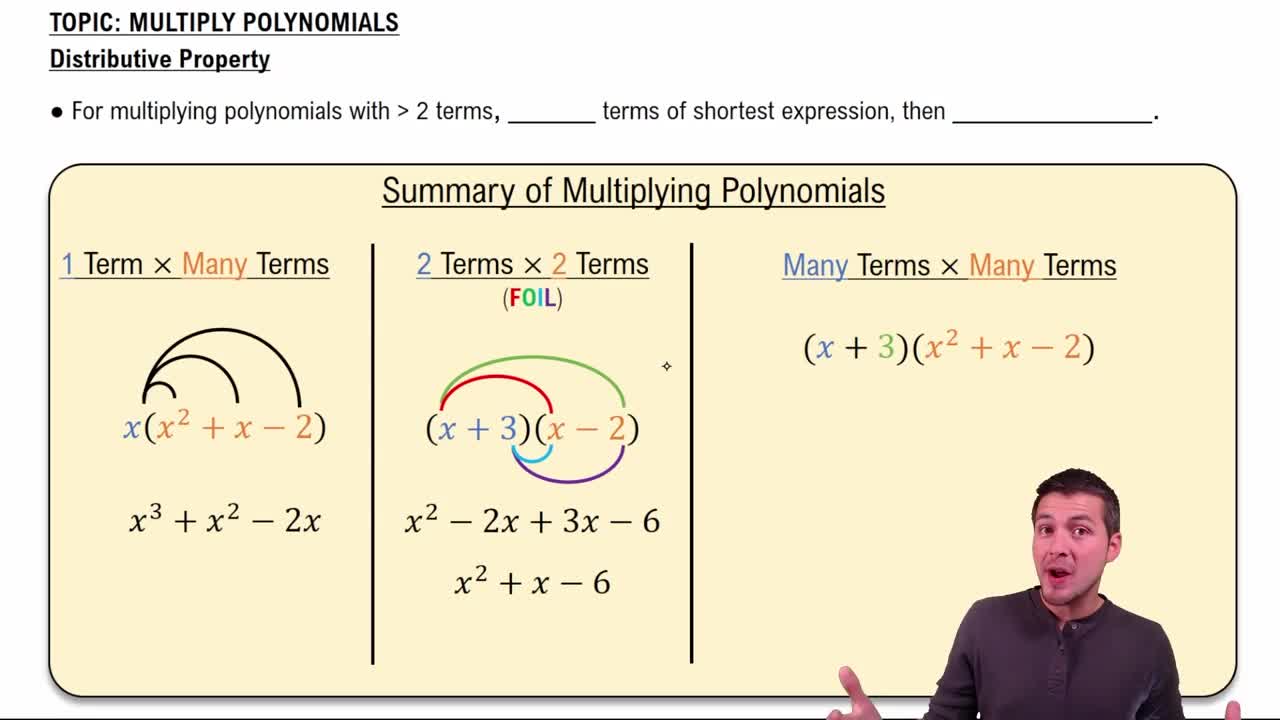Here are the essential concepts you must grasp in order to answer the question correctly.
Exponential Rules
Exponential rules are fundamental properties that govern the manipulation of expressions involving exponents. Key rules include the product of powers (a^m * a^n = a^(m+n)), the power of a power ( (a^m)^n = a^(m*n)), and the power of a product ( (ab)^n = a^n * b^n). Understanding these rules is essential for simplifying expressions with exponents.
Recommended video:
Cramer's Rule - 2 Equations with 2 Unknowns
Distributive Property
The distributive property states that a(b + c) = ab + ac, allowing us to multiply a single term by two or more terms inside a parenthesis. This property is crucial when simplifying expressions, especially when dealing with products of sums or differences. It helps in breaking down complex expressions into simpler components for easier manipulation.
Recommended video:
Multiply Polynomials Using the Distributive Property
Negative Exponents
Negative exponents indicate the reciprocal of the base raised to the opposite positive exponent, expressed as a^(-n) = 1/(a^n). This concept is vital when simplifying expressions that contain negative exponents, as it allows for the transformation of terms into a more manageable form, often leading to a clearer final expression.
Recommended video:
 Verified step by step guidance
Verified step by step guidance Verified video answer for a similar problem:
Verified video answer for a similar problem:

